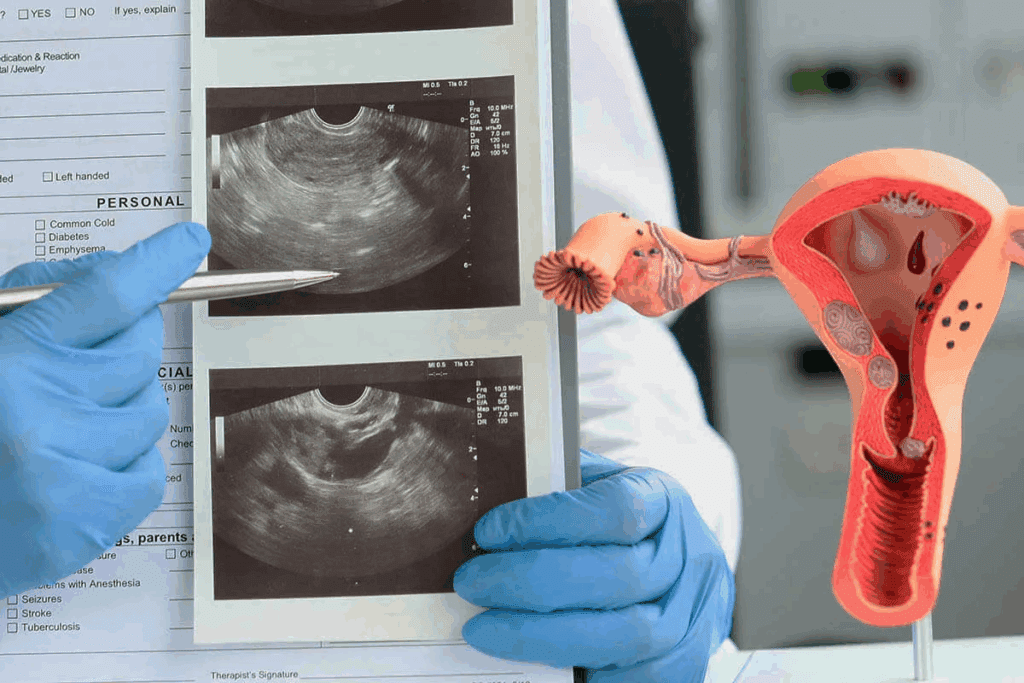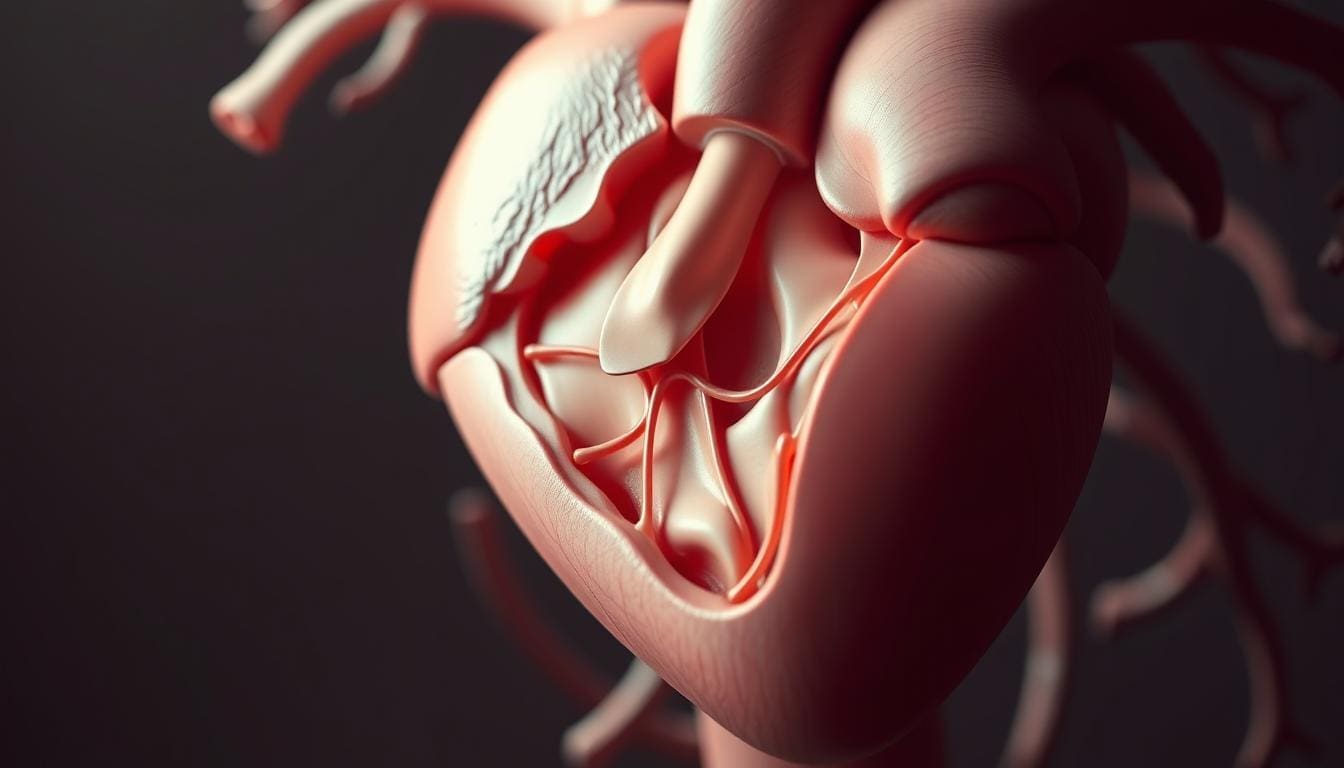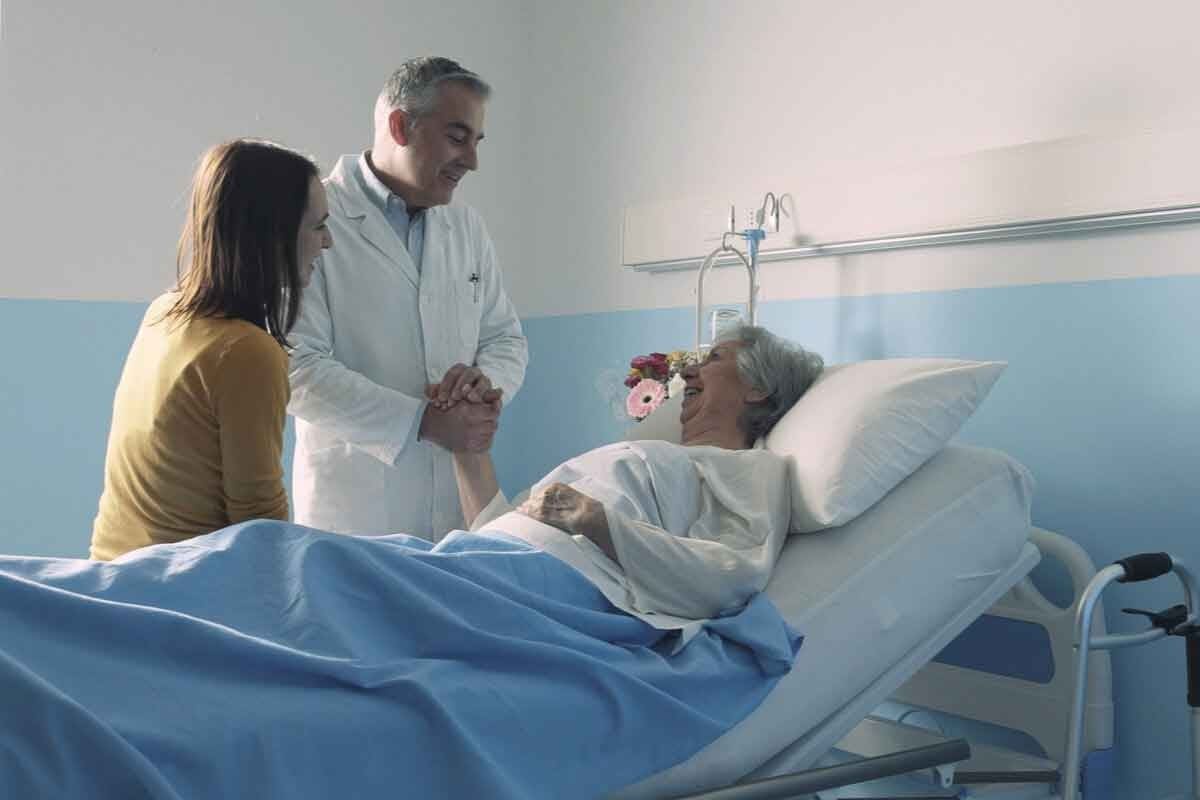Last Updated on November 26, 2025 by Bilal Hasdemir

Are you looking for ways to shrink uterine fibroids safely? Liv Hospital offers trusted advice and care. We find effective strategies and treatments that focus on your health and fertility.
Dealing with uterine fibroids can be tough. But, new medical tech offers many treatment options. Companies like Neurocrine Biosciences are working on new treatments for fibroids and other conditions.
At Liv Hospital, we stress the need for professional advice. Our team is here to give you the best care and support. We’re with you every step of the way.
Key Takeaways
- Modern medical techniques can help shrink uterine fibroids.
- Seeking professional medical advice is key to finding the right treatment.
- New treatments are being made by pharmaceutical companies.
- Liv Hospital offers full care and support for patients.
- We put your overall well-being first in our patient-focused care.
Understanding Uterine Fibroids and Their Impact

Uterine fibroids can greatly affect a woman’s life. It’s key to know what they are and how they impact health. These growths are common and can cause many symptoms and problems.
What Are Uterine Fibroids?
Uterine fibroids, or leiomyomas, are non-cancerous tumors in or around the uterus. They can grow in size, number, and location. Hormones, like estrogen, make them grow more during a woman’s reproductive years.
Common Symptoms and Complications
Women with uterine fibroids may face several symptoms, including:
- Heavy or prolonged menstrual bleeding
- Pelvic pain or pressure
- Frequent urination
- Constipation
- Infertility or recurrent miscarriage
These symptoms can greatly affect daily life and well-being. In some cases, fibroids can lead to anemia from heavy bleeding or severe pain from a twisted fibroid.
Risk Factors and Prevalence
Some groups are more likely to have uterine fibroids. Risk factors include:
- Age: Women between 30 and 50 are more likely to have them.
- Family history: Having a family history increases the risk.
- Obesity: Being overweight or obese may raise the risk.
- Ethnicity: African American women are more likely to have fibroids and severe symptoms.
Knowing these risk factors and how common fibroids are can help in early detection and treatment. Hormone therapy, like progestin, is often used to manage symptoms. Learning how to shrink fibroids and the role of hormone treatment can help many women find relief.
Understanding uterine fibroids, their symptoms, and risk factors helps women make informed health decisions. They can explore effective treatments, including shrinking fibroids and managing symptoms.
Diagnosing Fibroids: When Treatment Is Necessary

Diagnosing uterine fibroids requires a mix of clinical checks and advanced imaging. Getting the right diagnosis is key to picking the best treatment.
Common Diagnostic Methods
Doctors use several ways to find out if you have uterine fibroids:
- Pelvic Examination: A healthcare provider feels the uterus for any oddities.
- Imaging Tests: Ultrasound, MRI, or CT scans show the fibroids’ size and where they are.
- Hysteroscopy: This lets doctors see inside the uterus directly.
These methods help doctors see how big the fibroids are and how they affect your health.
Determining When Intervention Is Needed
Not every uterine fibroid needs treatment. But, you might need it if the fibroids cause big problems or symptoms. You might need treatment if:
- Severity of Symptoms: You’re bleeding a lot, in a lot of pain, or feeling pressure.
- Impact on Quality of Life: Fibroids are really affecting your daily life and happiness.
- Fertility Concerns: Fibroids are messing with your ability to get pregnant or could make pregnancy risky.
Knowing when to treat fibroids is important for managing them well. Options like hormone therapy and small procedures can help shrink uterine fibroids and ease symptoms.
By knowing when to act, doctors can help you manage your fibroids better. This can make your life better and more enjoyable.
Medical Approaches to Shrink Uterine Fibroids
There are many ways to treat uterine fibroids, from waiting and watching to complex plans. The right treatment depends on the fibroids’ size, symptoms, and the patient’s health and goals.
Monitoring and Watchful Waiting
Women with small, painless fibroids might just need to be watched. They see their doctor regularly to check the fibroids and symptoms. This way, they avoid treatments unless the fibroids grow or symptoms get worse.
Over-the-Counter Pain Management
Women with pain from fibroids can try over-the-counter pain relievers. Drugs like ibuprofen help with pain and heavy bleeding. They don’t make the fibroids smaller, but they can make life easier.
Multidisciplinary Treatment Approaches
Teamwork is key in treating fibroids. Doctors, radiologists, and sometimes others work together. They create a plan that might include medicines, lifestyle changes, and small surgeries.
This approach helps meet each patient’s needs. It aims to shrink fibroids and boost overall health.
Hormone Therapy Options for Fibroid Reduction
Managing uterine fibroids often involves hormone therapy. This method has been shown to decrease fibroid size and alleviate symptoms. Hormone therapy works by regulating the hormonal influences on fibroids, mainly estrogen, which promotes their growth.
GnRH Agonists: Benefits and Limitations
Gonadotropin-releasing hormone (GnRH) agonists are medications that can reduce fibroid size. They induce a menopause-like state, decreasing estrogen production. These medications can significantly reduce fibroid size and alleviate symptoms such as heavy bleeding and pelvic pain. Yet, their use is limited to short-term periods due to side effects like osteoporosis and menopausal symptoms.
A study in the Journal of Clinical Endocrinology and Metabolism found GnRH agonists can reduce uterine fibroid size by up to 50% within three months of treatment.
“The use of GnRH agonists before surgery can facilitate less invasive procedures and reduce operative complications.”
Progestin Treatments for Symptom Control
Progestin treatments are another hormone therapy option for managing fibroid symptoms. Progestins can help control heavy menstrual bleeding associated with fibroids. While they may not reduce fibroid size as effectively as GnRH agonists, they can provide symptom relief. Progestins work by thinning the uterine lining, reducing menstrual bleeding.
| Treatment | Effect on Fibroid Size | Symptom Relief |
| GnRH Agonists | Significant reduction | Yes |
| Progestin Treatments | Minimal reduction | Yes |
Other Hormonal Medications
Other hormonal medications, such as selective estrogen receptor modulators (SERMs) and aromatase inhibitors, have been explored for treating fibroids. SERMs can have mixed effects on fibroids, sometimes reducing estrogen’s promotional effect on fibroid growth. Aromatase inhibitors, which lower estrogen levels, have shown promise in reducing fibroid size.
Side Effects and Long-Term Considerations
While hormone therapy can be effective, it’s important to consider side effects and long-term implications. Long-term use of certain hormone therapies can lead to significant side effects, such as bone density loss and increased risk of certain health conditions. Choosing hormone therapy should be done with a healthcare provider, weighing benefits against risks.
We recommend discussing the following with your healthcare provider: the benefits and risks of hormone therapy, alternative treatment options, and a personalized treatment plan tailored to your specific needs and health status.
Minimally Invasive Surgical Procedures
Uterine fibroids treatment has changed a lot with new surgical methods. These methods help women get better faster and with less pain than old surgeries.
Myomectomy: Preserving Fertility While Removing Fibroids
Myomectomy is a surgery that takes out fibroids but keeps the uterus. It’s great for women who want to have kids later. A study in the Journal of Minimally Invasive Gynecology shows it’s safe and works well for those who want to get pregnant.
“Myomectomy is a top choice for removing fibroids and keeping the uterus,” says Dr. Elizabeth Stewart, a leading fibroid expert.
Recovery and Effectiveness
How long it takes to get back to normal after myomectomy varies. Most women can start doing normal things again in a few weeks. Many women see big improvements in their life after the surgery.
| Procedure | Recovery Time | Effectiveness |
| Myomectomy | 2-4 weeks | High |
| Uterine Artery Embolization | 1-3 weeks | High |
Potential Risks and Complications
Myomectomy is mostly safe, but there are risks. These can include infection, bleeding, and adhesions. It’s important to talk about these risks with your doctor before deciding.
Key Considerations:
- The size and location of the fibroids
- The woman’s overall health and medical history
- The surgeon’s experience with minimally invasive procedures
Effective Ways to Shrink Uterine Fibroids Without Major Surgery
Women looking for surgery alternatives have many effective options. These non-surgical treatments can greatly improve life quality and reduce symptoms.
Uterine Artery Embolization (UAE)
Uterine Artery Embolization is a minimally invasive method. It cuts off blood to fibroids, causing them to shrink. This approach has shown to lessen symptoms and improve outcomes.
Benefits of UAE: Fibroids shrink, recovery is quick, and the uterus is preserved.
Radiofrequency Ablation
Radiofrequency ablation uses radio waves to heat and destroy fibroids. It’s effective in reducing size and easing symptoms.
Advantages: It’s minimally invasive, recovery is fast, and symptoms are greatly relieved.
Transcervical Fibroid Ablation
Transcervical fibroid ablation destroys fibroids through the cervix without incisions. Studies show it offers significant symptom relief.
MRI-Guided Focused Ultrasound
MRI-guided focused ultrasound is non-invasive. It uses ultrasound waves to heat and destroy fibroids. MRI guides it for accuracy.
Key benefits: It’s non-invasive, targets fibroids precisely, and has few side effects.
| Treatment | Method | Recovery Time |
| Uterine Artery Embolization (UAE) | Embolization to cut off blood supply | Minimal |
| Radiofrequency Ablation | Heat destruction of fibroid tissue | Quick |
| Transcervical Fibroid Ablation | Destruction through the cervix | Short |
| MRI-Guided Focused Ultrasound | Ultrasound waves to destroy tissue | Minimal |
These non-surgical methods offer effective ways to shrink uterine fibroids. They provide women with various options to suit their needs.
Lifestyle Modifications That May Help Reduce Fibroids
Medical treatments are often needed, but lifestyle changes can help too. By making dietary changes, exercising, and reducing stress, women can ease fibroid symptoms.
Dietary Changes and Nutritional Support
Making dietary changes can greatly improve health and help with fibroids. Eating more fruits, vegetables, and whole grains gives you important nutrients and antioxidants. Green leafy veggies are full of iron, which can help with heavy menstrual bleeding.
A study in the Journal of Women’s Health showed that eating lots of fruits and veggies might lower fibroid risk.
“A higher intake of fruits and vegetables, mainly those with vitamins A and C, may lower fibroid risk,”
the study found.
| Dietary Component | Benefit |
| Fruits and Vegetables | Rich in antioxidants and vitamins |
| Whole Grains | High in fiber, supports hormonal balance |
| Lean Proteins | Supports overall health and muscle mass |
Exercise and Weight Management
Exercise is key in managing fibroids. It keeps you healthy, reduces stress, and boosts well-being. Try to do at least 30 minutes of moderate exercise daily.
Keeping a healthy weight is also vital. Obesity increases fibroid risk. A balanced diet and regular exercise help maintain a healthy weight.
Stress Reduction Techniques
Stress can make fibroid symptoms worse. Managing stress is critical. Yoga, meditation, and deep breathing can help. These activities improve mental health and may also help physically by reducing inflammation and balancing hormones.
Adding these lifestyle changes to your routine can be a big help in managing fibroids. They might not replace medical treatments, but they can enhance your overall quality of life.
Choosing the Right Treatment Approach for You
Choosing the right treatment for uterine fibroids is important. It affects your health and well-being. Always talk to your healthcare provider to find the best treatment for you.
Factors to Consider: Age, Fertility Desires, and Symptoms
Several factors are key in choosing a treatment for uterine fibroids. These include your age, if you want to have children, and how bad your symptoms are. For example, if you want to keep your fertility, you might choose treatments that are less invasive.
Age also plays a big role. Younger women might choose treatments that help them keep their fertility. Women closer to menopause might consider more definitive treatments.
Questions to Ask Your Healthcare Provider
It’s important to talk to your healthcare provider about your treatment options. Ask them questions like:
- What are the benefits and risks of each treatment?
- How will the treatment affect my fertility and health?
- What are the short-term and long-term side effects?
- Are there other treatments or therapies that can be used with the main treatment?
Creating a Personalized Treatment Plan
A personalized treatment plan is tailored to your needs. Your healthcare provider will work with you to create a plan that fits your symptoms and goals.
Think about your lifestyle and personal circumstances when planning your treatment. This includes your health, any past surgeries, and your support system.
Insurance Coverage and Cost Considerations
It’s important to know about insurance coverage and costs of treatments. Ask your healthcare provider about the costs and what your insurance covers.
Also, think about the costs of managing symptoms and any complications. By looking at all costs, you can make a better decision about your care.
Conclusion: The Future of Fibroid Treatment
Medical technology and pharmaceuticals are getting better, helping treat uterine fibroids. The future looks bright for fibroid care. New research and development are leading to better, less invasive treatments.
We’ve looked at many treatment options, from hormone therapy to lifestyle changes. Each has its own benefits and things to consider. It’s key to talk to healthcare experts to find the right treatment for you.
Personalized care is very important. Working with healthcare providers helps create a treatment plan just for you. As fibroid treatment advances, we’ll see even more new solutions. This brings hope to those dealing with uterine fibroids.
Staying up-to-date on fibroid treatment can help you manage your condition better. The future of fibroid care is promising. It focuses on effective, patient-centered treatments that aim to shrink fibroids and improve overall health.
FAQ
Can uterine fibroids be shrunk without surgery?
Yes, you can shrink uterine fibroids without surgery. Techniques like uterine artery embolization and MRI-guided focused ultrasound are options.
How does hormone therapy help in reducing fibroids?
Hormone therapy, like GnRH agonists, can shrink fibroids. It helps balance hormones that affect fibroid growth.
What lifestyle changes can help manage uterine fibroids?
Eating right, exercising, managing weight, and reducing stress can help manage symptoms and health.
What are the benefits of minimally invasive surgical procedures for fibroids?
Procedures like myomectomy can preserve fertility. They offer a quicker recovery than traditional surgery.
How do I choose the right treatment approach for my fibroids?
Consider your age, fertility goals, and symptoms when choosing a treatment. A healthcare provider can help find the best option for you.
Can shrinking fibroids improve fertility?
Yes, shrinking or removing fibroids can improve fertility. This is true if the fibroids affect the reproductive system.
Are there any risks associated with hormone therapy for fibroids?
Yes, hormone therapy can have side effects. For example, GnRH agonists can lead to bone density loss with long-term use.
How effective are non-surgical techniques in shrinking fibroids?
Non-surgical techniques can be very effective. They offer alternatives to major surgery with fewer complications.
What diagnostic methods are used to identify uterine fibroids?
Ultrasound, MRI, and sometimes hysteroscopy or laparoscopy are used. They help identify and assess fibroids accurately.
Can fibroids shrink on their own?
Some fibroids may shrink after menopause due to hormone changes. But, this is not reliable for premenopausal women.
What are the possible side effects of progestin treatments for fibroids?
Progestin treatments can cause side effects. These include changes in menstrual bleeding, mood swings, and impacts on fertility.
How can I manage pain associated with uterine fibroids?
Over-the-counter pain meds and hormone therapy can help manage pain from fibroids.
Is it possible to prevent uterine fibroids from growing?
While preventing fibroids is not guaranteed, lifestyle changes and medical treatments can manage their growth and symptoms.
What is the role of a multidisciplinary approach in treating fibroids?
A team of gynecologists, radiologists, and specialists can provide tailored care. This approach ensures a well-rounded treatment plan.
References
Alebi̇osu, C. O., et al. (2004). Percutaneous renal biopsy as an outpatient procedure. Nigerian Journal of Clinical Practice, 7(2), 56-59. https://pubmed.ncbi.nlm.nih.gov/15481751/






